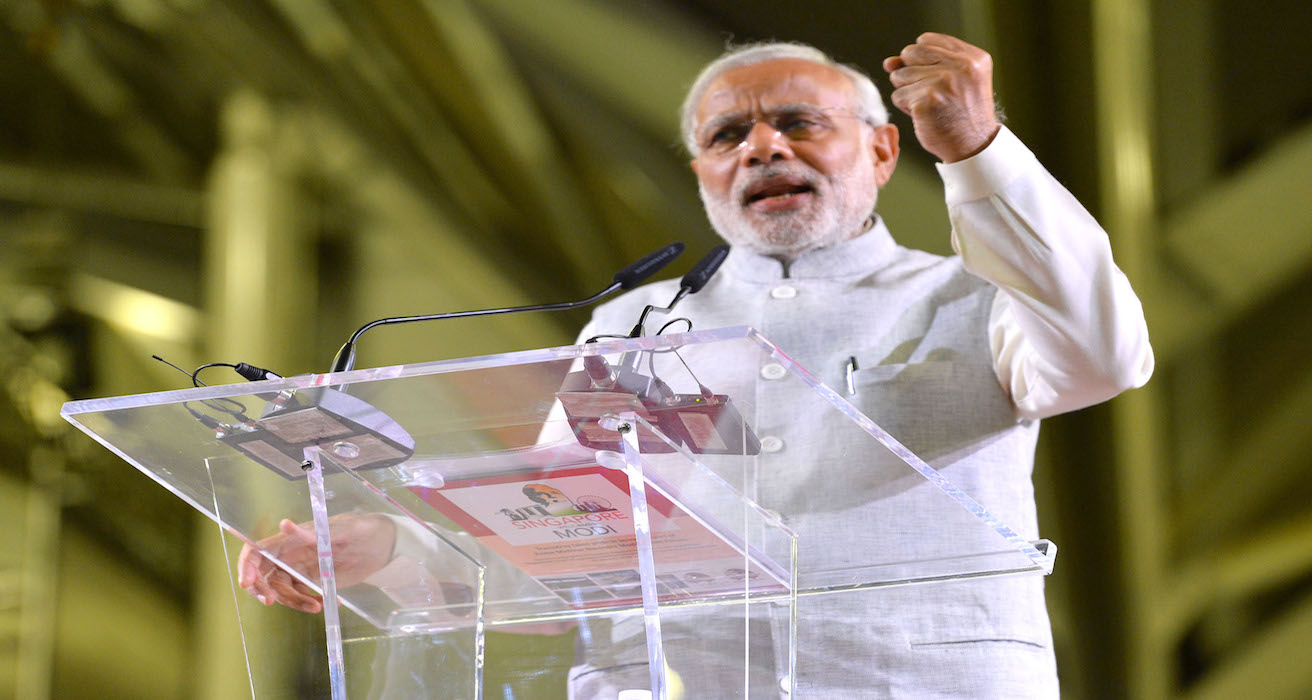Mutating Kashmir and Ladakh into “Bantustans”

The abolition of Kashmir statehood to bring stability and peace for the Kashmiris is a populist project, marketed to accelerate the larger project of Hinduisation of the Indian polity.
After the Modi government revoked Article 370 and the statehood of Jammu and Kashmir, the general opinion from New Delhi reflects a kind of current thinking. According to some of my acquaintances from New Delhi, what the Modi government has done in Kashmir is not wrong but perhaps questions could be raised around how Modi government has designed its action. Forceful arguments are made that coup-like activities, such as sending troops to Kashmir, telecom and media blackout and house arrests of the top leaders, shutting down of the internet and a ban on public meetings were certainly not required but may have been a precautionary step by the government to avoid a backlash and possibly riots. Therefore, supporters insist that in the end it is not a bad move at all by the Modi government because it has finally halted a seventy odd years old Kashmiri problem.
However, the simplistic interpretations of Article 370 as a “special” status for Kashmiris do not paint a complete picture of the instrument of accession, which necessarily was a negotiation, held between the princely state of Kashmir and the Union of India. Kashmir’s desire to be independent after British rulers left India in 1947 was wrecked when Kashmir was attacked by the Pakistani tribesmen. Despite India’s timely help, Maharaja Hari Singh was very clear that Kashmir’s accession to India was only for matters such as foreign affairs, defence and communications and otherwise Kashmir would remain independent. Article 370 was thus a negotiated provision that established a constituent assembly of Kashmiri and Indian leaders to be the final decision-making authority over all the Kashmiri matters. But on Monday India’s Home Minister reinterpreted the instrument of accession and employed federal parliament as a substitute to the dissolved Jammu and Kashmir (JK) legislative assembly — due to the President’s rule and in the process made the provisions of negotiations completely defunct, raising questions around the constitutionality of such a political enactment.
What is most arguable is not just the abolishing of the Article 370, but the fact that the Home Minister has also abruptly divided the JK state into two Union Territories or “bantustans,” ending Kashmir’s statehood. Disappearing of a full-fledged state and turning Kashmir and Ladakh into two union territories raises some very complex questions. Article three of the Indian constitution clearly says that any changes to the area of the state must be “ referred by the President of India to the legislature of that state for expressing its views thereon.” But such fundamental aspects of the Indian constitution have been bypassed. The Home Minister has made the parliament a proxy in lieu of the JK assembly given the state has been under the president’s rule. Such arbitrariness in altering JK into two “bantustans” also means that in future any Indian state under president’s rule can be voted by the parliament in favour of its abolition, as now many specialists have argued.
This sort of unconstitutional, anti-federal package that explains the workings of Modi 2.0 does require attention. The abolition of Kashmir statehood to bring stability and peace for the Kashmiris is a populist project, marketed to accelerate the larger project of Hinduisation of the Indian polity. It is not only by taking away special powers of the Muslim majority Kashmir that it would bring in votes for Bharatiya Janata Party (BJP) from rest of the country but the move has also separated the Buddhist dominated Ladakh region from Kashmir.
About 400 kilometers from the state capital of Srinagar in Kashmir valley, the Ladakh region is made up of a Buddhist dominated district of Leh and a Muslim majority Kargil district. Buddhists have long demanded a separation from the JK state due to Kashmiri centric policies that allegedly discriminated and marginalised the region, therefore rendering of the UT status to Ladakh is whole-heartedly welcomed by a multitude of people. But Ladakh is given a Union Territory (UT) status without a legislature and in this regard the questions are raised on how minorities would be represented in the UT. People in Kargil have called for a complete shut down exposing its worry about the Indian state’s decision to convert Ladakh into a UT. Given the focus of this enactment would clearly favour the Leh district and not Kargil, there are concerns on how this was actually a unilateral decision where Kargilis were not even consulted by the Indian government.
An undermining of the federal institutions and subsuming of the local politics clearly means that it is not the security and prosperity of the Kashmiris which is at a stake for the Modi government. The lack of debate or any form of consultation juxtaposed by the draconian measures reveals what Modi 2.0 would eventually produce — i.e. reinstituting governance across India. Parliamentary democracy is no doubt critical but when achieved by undermining the constitution, it cannot be referred as civil or even revolutionary. As one of the former Attorney General of India commented that there is nothing revolutionary about Modi government’s abrupt move on Kashmir and how it is merely a political decision, even though not a wise one.
Dr Alka Sabharwal is an Adjunct Lecturer with the School of Social Sciences at the University of Western Australia.
This article is published under a Creative Commons Licence and may be republished with attribution.




